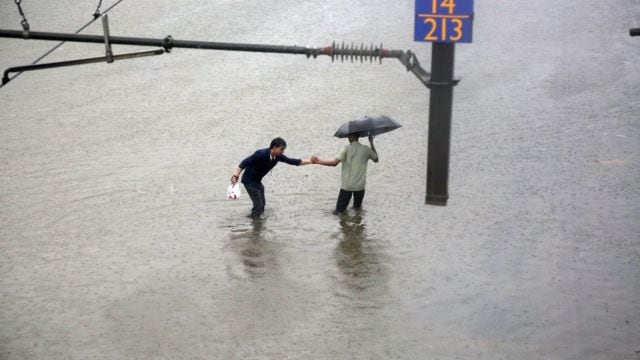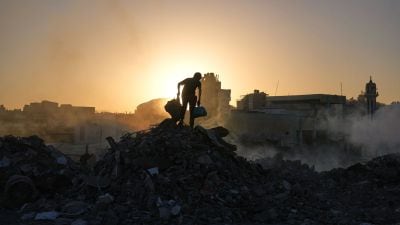Mumbai rains trigger flooding: What to remember when you are wading through water to avoid infection?
Flood water is more than rainwater and contains sewage, garbage, industrial contamination and pathogenic micro-organisms.
 Flood water is more than rainwater and often contains sewage, garbage, industrial contamination and pathogenic microorganisms. (Express Photo by Ganesh Shirsekar)
Flood water is more than rainwater and often contains sewage, garbage, industrial contamination and pathogenic microorganisms. (Express Photo by Ganesh Shirsekar) When cities like Mumbai go through heavy rains, flooding and water-logging, a lot of people find themselves walking through contaminated water to get home or reach their workplace. Flood water is more than rainwater and often contains sewage, garbage, industrial contamination and pathogenic microorganisms. Contact with flood water for a prolonged duration can produce a variety of skin and gastrointestinal infections.
The immediate impact on skin
One of the conditions commonly seen after floods is the development of skin infections. “Contaminated water can have bacteria and fungi; and skin infections can include, but are not limited to cellulitis, fungal foot infections, or boils. Cuts, scratches and other minor skin wounds serve as entry points for infection, especially in humid conditions when the skin is wet. Other identifiable conditions that are regularly encountered after flooding are contact dermatitis, which is caused by chemicals, detergents or sewage irritants that cause itching, redness and rashes,” says Dr Chandani Jain Gupta, dermatologist, Elantis Healthcare, New Delhi.
Extended periods in wet clothing and shoes can also lead to trench foot which includes swelling, numbness and peeling. “In addition, prolonged conditions of warmth and moisture can cause an overgrowth of fungus resulting in itch and rashes, especially between the toes or in skin folds,” she adds.
Risk of bacterial infection
Flood water also presents an increased risk for leptospirosis, a bacterial infection that can be spread via rat urine. “Aside from requiring contact with urine, it can also enter the blood through a small crack in the skin. If left untreated, it can become serious,” says Dr Gupta.
Many bacteria, viruses and parasites that cause gastrointestinal infections can survive in unchlorinated water for extended periods. “While less likely to be infected by simply walking, people can unknowingly swallow floodwater while wading through high levels or through hand-to-mouth contact, leading to infection. Sometimes freshwater supplies get contaminated through broken pipes and get into your supplies,” says Dr Rommel Tickoo, Director, Internal Medicine, Max Healthcare.
Even the moisture-laden air, given the wetness all around, can lead to growth of molds in fabrics, carpets, inside cabinets and even AC filters. “Now the mold spores easily travel through air and are drawn deep inside the lungs. This can cause upper respiratory tract infections and pose a threat to older adults, immunocompromised people and those with respiratory conditions like asthma and chronic obstructive pulmonary disease,” adds Dr Tickoo.
How can you protect yourself
To ensure your own protection, avoid wading in floodwater as much as possible. If it is unavoidable, use protective footwear like rain boots and change out of wet clothes as soon as possible. “Another safety tip is to wash skin and discard clothing as soon as you reach home, using clean water and a mild soap. Dry out the skin between the toes, where fungus can begin to grow,” says Dr Gupta. She suggests applying antiseptic solution to any small cuts just to ensure that bacteria hanging around floodwater do not make an unwanted entrance. “Rehydrate the skin barrier we just washed off by applying moisture to the skin if conditions allow,” she says. Dr Tickoo suggests using dehumidifiers for damp rooms.



- 01
- 02
- 03
- 04
- 05




























